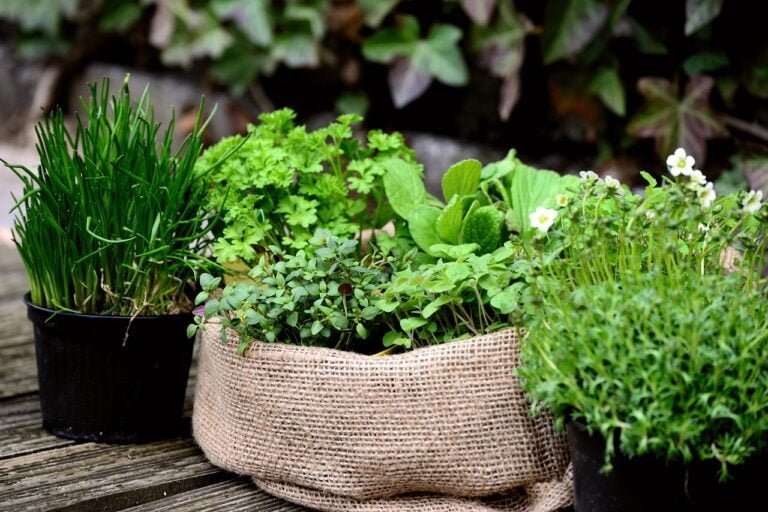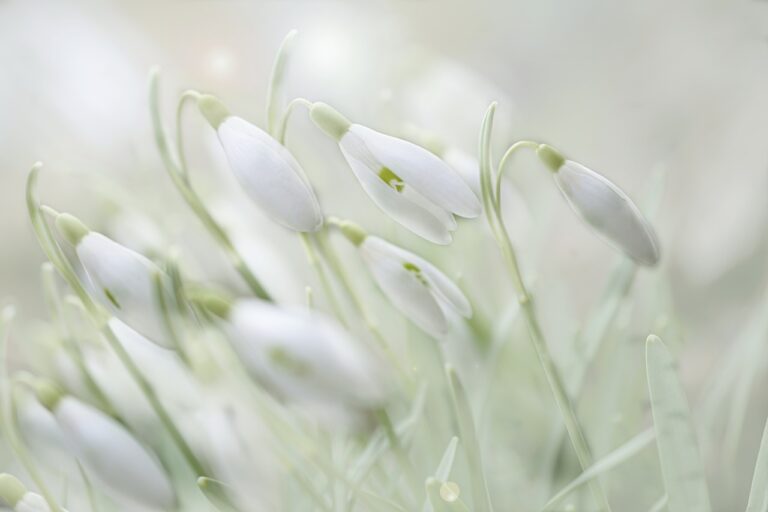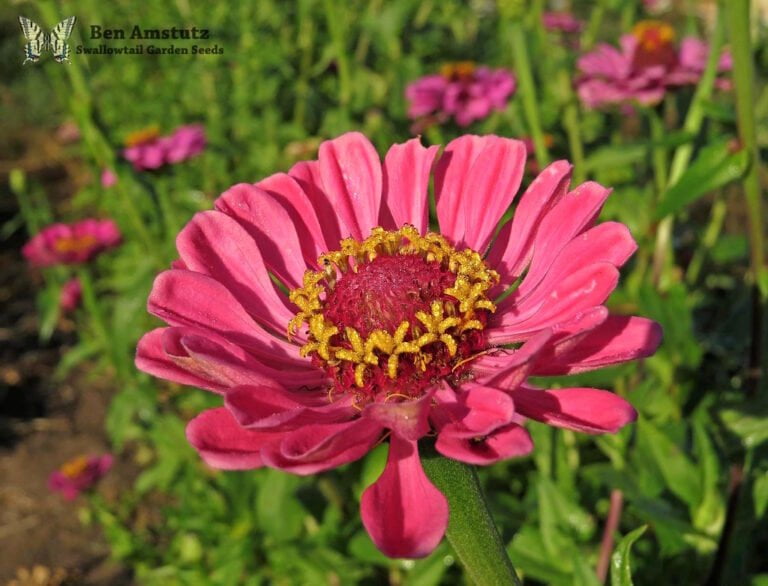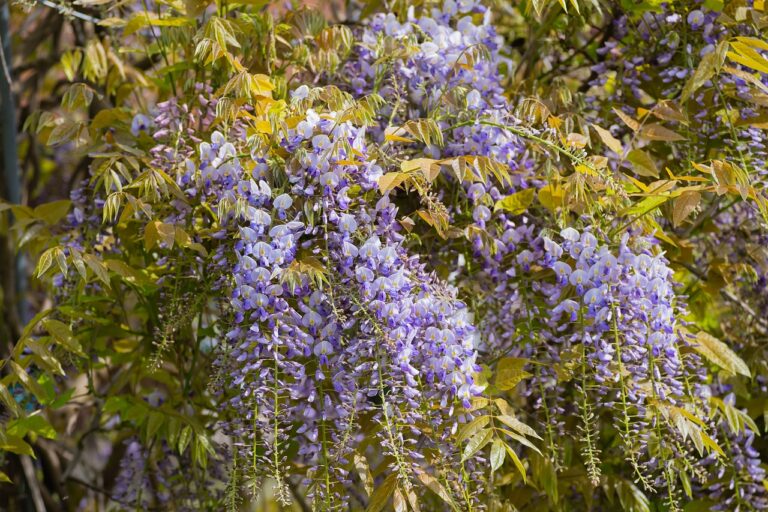Effective Methods for Storing Pressed Flowers
To store pressed flowers effectively, make sure they are completely dry to prevent mold growth and maintain vibrant colors. Use airtight plastic boxes for protection from exposure, or sealable plastic containers to shield from moisture. Store in a cool, dark place to avoid mold and inspect regularly. Consider using glycerin or wax for longevity and aesthetic appeal, and silica gel packets for moisture absorption. Best storage conditions include dim, arid environments and hermetic containers like glass jars. Special storage considerations differ based on use. Investigate alternative methods like microwave presses for quick drying. Make sure your pressed flowers stay fresh and beautiful for longer.
Importance of Proper Flower Drying
Properly drying flowers before pressing is essential to prevent mold growth and guarantee the long-term preservation of their color and shape. When it comes to drying flowers for pressing, the key is to make sure they are completely dry. Moisture left in the flowers can lead to mold formation, which can ruin the pressed flowers and impact their longevity. Flowers that are not entirely dry may also lose their color and shape during the pressing process.
To successfully preserve flowers, it is vital to allow them to dry thoroughly. Flowers should be dried in a well-ventilated area to maintain their natural beauty. Selecting flowers that are partially opened for pressing can also assist in the preservation process. These flowers are less likely to retain moisture and more likely to keep their vibrant colors and intricate shapes once pressed.
Properly dried flowers not only press better but also lead to pressed flowers that are more visually appealing and longer-lasting. By making sure that the flowers are completely dry before pressing, you can significantly increase the chances of successfully preserving their beauty for an extended period. The quality of the pressed flowers ultimately depends on the thoroughness of the drying process and the attention to detail in ensuring the flowers are adequately dried.
Suitable Storage Containers for Pressed Flowers
I will talk about the best container material options, such as airtight plastic boxes, glass jars, or paper envelopes, for storing pressed flowers. Factors like the size and shape preferences should guide your choice of storage containers to protect your pressed flowers effectively. Keep in mind that selecting a container that shields pressed flowers from light, moisture, and heat is essential for maintaining their quality over time.
Container Material Options
When storing pressed flowers, selecting appropriate containers is vital for maintaining their preservation and quality. Airtight plastic boxes are excellent choices as they shield the pressed flowers from exposure to air, helping to prevent deterioration. Glass jars are suitable for smaller pressed flowers and offer an aesthetically pleasing storage solution. Sealable plastic boxes provide an additional layer of protection, keeping the pressed flowers safe from moisture and potential damage. These containers help to prolong the lifespan of the pressed flowers by creating a stable environment that minimizes external factors that could harm them. Choosing the right container material is essential in ensuring the longevity and quality of your stored pressed flowers.
Size and Shape Preferences
For best storage of pressed flowers, choose flat and rectangular containers to make sure the flowers are accommodated without bending or damage. Opt for acid-free containers to prevent discoloration or deterioration of the pressed flowers over time. Clear containers are a good choice as they allow easy viewing without having to open the storage. It is crucial to select containers with tight-fitting lids or seals to protect the pressed flowers from dust, moisture, and pests. Make sure that the containers are slightly larger than the pressed flowers to allow for proper air circulation and prevent overcrowding. By following these guidelines and selecting the right size and shape of containers, you can effectively store your pressed flowers for long-term preservation.
Preventing Mold and Dust Build-up
When maintaining pressed flowers, it’s essential to make sure they are thoroughly dried to prevent mold formation. Storing them in a cool, dark place and regularly inspecting for any signs of moisture or mold is vital for maintaining their quality. Consider utilizing airtight containers or alternative drying methods to safeguard against mold and dust build-up effectively.
Mold Prevention Techniques
How can we effectively prevent mold and dust build-up when storing pressed flowers? To make sure that the pressed dried flowers are completely dry before storage. Additionally, store them in a dry and dark environment to avoid moisture accumulation, which could lead to mold growth. Regularly inspect the pressed flowers for any signs of mold development and discard any affected pieces promptly. Avoid pressing flowers with high water content, as they are more prone to mold. Consider using alternative drying methods such as air drying or silica gel drying to prevent both mold and dust build-up effectively. These methods will help preserve the quality of your pressed flowers for a longer period.
Dust Control Methods
To effectively control dust and prevent mold build-up when storing pressed flowers, use airtight containers and silica gel packets to maintain optimal moisture levels. Airtight containers create a barrier against dust particles and help regulate the moisture exposure of the pressed flowers. Silica gel packets, known for their moisture-absorbing properties, assist in preventing mold growth by reducing humidity within the storage containers. It is crucial to store pressed flowers away from direct sunlight and heat sources to preserve their color and prevent deterioration. Regularly inspect and clean the storage containers to avoid dust accumulation on the delicate pressed flowers. By implementing these dust control methods, you can safeguard your pressed flowers from environmental damage and ensure their longevity.
Utilizing Pre-Preservation Techniques
Utilizing pre-preservation techniques such as glycerin or wax can effectively improve the longevity and visual appeal of pressed flowers for various crafting projects. When it comes to preserving the delicate beauty of pressed flowers, these methods offer dependable ways to guarantee the flowers remain vibrant and intact over time.
Glycerin preservation involves submerging dried flowers in a solution of water and glycerin. This process allows the flowers to absorb the glycerin, maintaining their natural color and texture. The glycerin replaces the water content in the flowers, preventing them from becoming brittle and helping them keep their flexibility. This technique is particularly useful for flowers that tend to lose their color quickly when dried.
On the other hand, wax preservation entails dipping pressed flowers into melted wax. The wax creates a protective coating around the flowers, preserving their appearance and guarding them against damage. This method not only maintains the color of the flowers but also helps in retaining their shape and structure. Wax preservation is a suitable choice for flowers that are prone to losing their petals easily.
Both glycerin and wax pre-preservation techniques are effective ways to improve the lifespan of pressed flowers, making them ideal for use in various artistic and decorative projects.
Optimal Storage Conditions for Longevity
When storing pressed flowers for longevity, it is crucial to ensure they are kept in optimal conditions to maintain their color and quality effectively. To achieve this, here are three indispensable tips to bear in mind:
- Dim, Arid Place: Pressed flowers should be stored in a dim and arid environment. Exposure to direct sunlight can cause the colors of the flowers to fade rapidly and the petals to become brittle. By keeping them in a dim place, you can preserve their vibrancy and prevent deterioration over time.
- Hermetic Containers: Utilize hermetic containers such as glass jars or sealable plastic boxes for storing pressed flowers. These containers help protect the flowers from moisture and dust, which can degrade the quality of the petals. By sealing them in hermetic containers, you create a stable microclimate that aids in maintaining the integrity of the pressed flowers.
- Silica Gel Packets: Including silica gel packets in the storage container can help absorb any excess moisture that may be present. Moisture can lead to mold growth and deterioration of the pressed flowers. By using silica gel packets, you can effectively control the humidity levels within the container, ensuring the longevity of your pressed flowers.
Special Considerations for Different Uses
Considering the varied purposes for which dried flowers are stored, it is important to customize the storage methods to each specific use case for best preservation. When storing dried pressed flowers for resin, it is vital to place them in a completely dry, airtight container. This prevents any moisture from impacting the flowers, ensuring their quality is maintained. For dried flowers intended for confetti, storing them in cool, dark places inside paper bags is ideal. The paper bags help absorb any excess moisture while protecting the flowers from light exposure.
For dried flowers intended for tea, utilizing glass jars with airtight lids is recommended. These jars shield the flowers from both moisture and light, preserving their quality for an extended period. When storing pressed flowers in a book press, it is important to keep them in a dark, dry, and cool environment. This safeguards the flowers from environmental factors that could compromise their longevity. By considering the specific requirements of each use case, such as using absorbent paper for confetti storage or airtight containers for tea, the quality and integrity of the dried flowers can be effectively maintained.
Alternative Methods for Preserving Dried Flowers
To effectively preserve dried flowers, consider utilizing the silica gel method as an alternative preservation technique. This method works by gently removing moisture from the flowers, helping to maintain their shape and color over time. Here are three additional methods that can aid in the preservation of dried flowers:
- Microwave Flower Press: A quick and efficient way to press and dry flowers is by using a microwave flower press. This method involves placing the flowers between layers of absorbent paper such as wax paper and pressing them with a microwave-safe flower press. The microwave helps to speed up the drying process while maintaining the flowers’ vibrant colors.
- Rubber Band Method: Another simple technique is to bundle the flowers together and secure them with a rubber band. Hanging them upside down in a dark, well-ventilated area allows the flowers to air dry naturally. This method is cost-effective and ideal for preserving flowers with delicate petals.
- Glassine Paper and Flower Press Kit: Utilizing glassine paper as a protective barrier for pressed flowers can prevent damage and help maintain their delicate structure. Investing in a flower press kit can also streamline the pressing process, ensuring that the flowers are well-preserved and neatly organized for future use in crafts and decorations.






